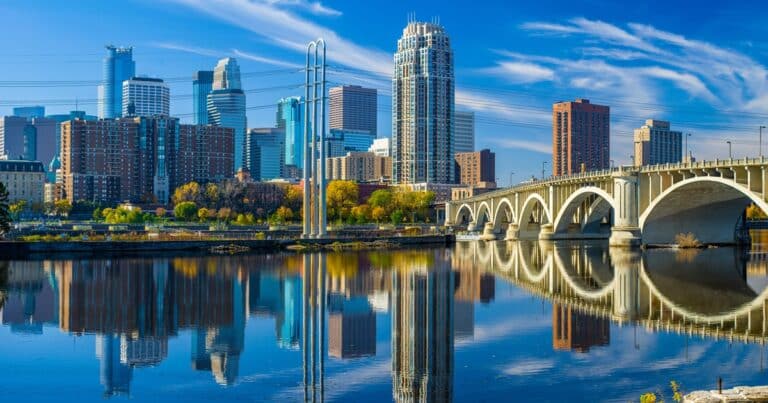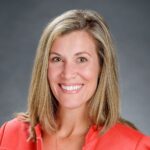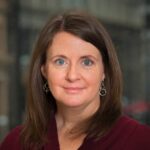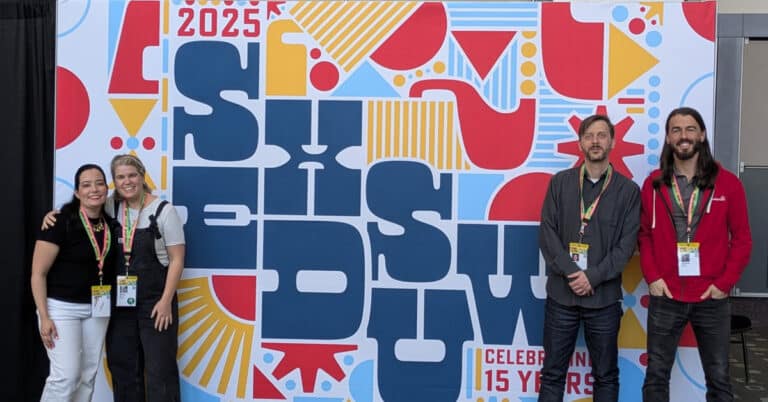In our work supporting more than 500 school districts and state-level partners across 24 states, we’ve learned that lasting systems change requires meaningful participation and buy-in from individuals throughout a learning community. This includes families, learners, higher education, business and community partners, as well as school and building leaders and elected officials.
This collective work begins with challenging ourselves to imagine a future for teaching and learning that stretches our thinking about what’s possible and articulates our hopes and dreams for future graduates – and then formalizing those ideas into a shared vision that will guide decision-making to ensure we’re working toward that future.
Aspiration setting and visioning require a diverse set of voices, but not all at the same time.
Aspiration setting and visioning can look different from community to community. Still, their purpose remains the same: building consensus and creating alignment around what community members hope to see. For Jen Loescher with the Southern Nevada Regional Professional Development Program, the “people with boots on the ground have to be involved” to build the relationships necessary to make lasting change.
“In a district or state, or even just one school, we all have different lived experiences and thoughts. And if I’m in that aspirational setting, if I understand that shared, common vision, you won’t have to pull me along,” said Loescher. “If you’re passionate about something, it’s hard not to have that fire lit within you. That improves the likelihood of creativity and human connection. We need the excitement when something is going to be a heavy lift.”
In Nevada, the journey toward creating a shared vision took seven months, beginning with a convening of 200 Nevadans, including educators, learners, families, business representatives and community members. Together, they identified the mindsets and skills that mattered most to them and developed the Nevada Portrait of a Learner, formally articulating their vision for Nevada learners. More learner input was gathered and more than 1,400 responses from community and family conversations and surveys were coded to create a draft Portrait of a Learner that could be more widely shared for feedback through one-on-one conversations and additional surveys.
Nevada’s Portrait of a Learner journey illustrates that it matters who’s involved and when they’re involved. Include too many individuals in the beginning, or too many individuals too far removed from the classroom, and there’s a risk that the work won’t get off the ground. Conversely, bringing in some groups of people, such as educators, too late in the process, can seem like you’re just going through the motions and not soliciting meaningful feedback.
“As a teacher, in the past I’ve been asked to enter into a process and have felt like it’s too late, because it’s been about rubber stamping – being able to say you talked to teachers,” said Loescher. “I don’t think there’s one right answer, but it is important to think through the whole visioning process. How many people will be involved, and for how long? And knowing we might be pulling people in again and communicating that.”
Know your limits and non-negotiables, but don’t let them control the narrative.
While it’s essential to maintain a sense of exploration throughout the process, Loescher asserts that understanding constraints and non-negotiables within your local context can allow participants to engage without fear of building something that will be torn down when factors outside the group’s control come into play.
“If you’re working within constraints from an outside layer, find out what those are before you pull everyone else in,” said Loescher, who cautioned about beginning the work without being transparent with participants about non-negotiables. “We want to get started because we’re excited, but honor whose energy you’re asking to expend. We want you to be creative, and when there are constraints, you can think through other avenues.”
Shanna Bumiller, 7-12 learning experience supervisor with Mason City Schools in Mason, Ohio, echoed the importance of thinking beyond the current moment. When the district facilitated conversations around a shared vision, getting folks to think about the future was challenging, but they rose to that challenge.
“It was hard for a lot of groups to think bigger than the here and now, bigger than ‘I want students to go to a good college,’ or ‘We want our kids to be happy.’ But what does that actually mean? Clear is kind,” said Bumiller. “Visioning is a great opportunity for reflection, for looking around the landscape to see what’s coming, what’s working well, what do we need to continue to strive for.”
Rigorously exploring the future of learning can help you set aspirations and create visions. Browse our extensive resource library on the future of learning. Don’t skip out on:
An outside perspective can make all the difference.
Five years into a shift toward personalized, competency-based learning in Arizona, Julie Valenzuela, director of 21st century education in Amphitheater Public Schools in Tucson, Arizona, is thinking about how to sustain work that began with a clear vision. Just as the vision was created in collaboration, so must the work be sustained in collaboration.
“You can’t do the work alone. There’s no way,” said Valenzuela. When creating their vision, Amphitheater Public Schools began with principals and assistant principals before working with department heads, educators and learners. They brought in different groups at different times, ensuring their feedback was gathered when it would best provide direction for next steps. The vision they crafted together drove the district to consider what changes were needed at the district level to make that vision a reality, what structures and systems would need to be rethought or created anew to support the shift toward personalized, competency-based learning. And, as part of the Arizona Personalized Learning Network, Amphitheater Public Schools had the opportunity to build relationships and develop strategies with other learning communities within the state.
“You have to embrace collaboration,” said Valenzuela. “We were lucky to have KnowledgeWorks because we probably would still be old school if we hadn’t had somebody as innovative as KnowledgeWorks and the Center for the Future of Arizona to support us.”
Get started with aspiration setting for the future
KnowledgeWorks directly supports aspiration setting with district design team members and school-based participants who are working to realize the promise of personalized, competency-based learning. When possible, involving a broader, more representative audience through a KnowledgeWorks- or district-led process benefits the people leading the charge toward systems transformation.
Aspiration setting challenges all involved to assess the internal and external landscape of change by considering the changes on the horizon for education and their community, and what they hope to see in that context. The tips below can help you get started.
- Examine how the external landscape is changing
- Consider changes that are happening or could happen in the social, technological, economic, environmental and political spheres in your local and broader environment
- Consider changes that seem positive, negative and neutral from various vantage points
- Explore what the group would like to see and what could be happening in your learning community in ten or more years
- What are our hopes for the future given the changes on the horizon for education and our community?
- What might be happening in our learning community?
- Where and when might students learn?
- Who might support students’ learning?
- Consider in- and out-of-school partnerships and new educator roles
- What might learning look like?
- Imagine possibilities beyond current approaches
- After articulating aspirations for the future of learning, consider how the learning community’s current practices align with them – or don’t
- What are we already doing that seems aligned with our aspirations?
- What could we be doing differently to align with our aspirations?
- What might we need to stop doing to align with our aspirations?
Encouraging collective thinking around hoped-for outcomes and supporting learning communities in setting aspirations and crafting shared visions that will drive decision-making for years to come is a core part of KnowledgeWorks’ approach to helping school districts and states create the kinds of learning experiences that will prepare graduates for whatever comes next. We can help groups surface ideas, identify themes and trends and set the shared direction and purpose necessary to navigate the complex and rapidly changing environment surrounding education.
Article written by former Senior Manager of Communications Jillian Kuhlmann






